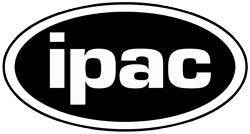Euclid will carry out two types of surveys:
- The Wide Survey covering ~15000 (deg)2 of the extragalactic sky, the main survey of the mission.
- Deep Fields totaling~ 50 (deg)2 of deep fields and calibration observations regularly interleaved within the main survey schedule.
The Reference Observation Sequence for the Euclid Wide Survey (Scaramella et al. 2022).
Key Information on the Euclid Wide Survey:
- Core survey, required to meet mission objectives.
- ~15000 (deg)2, nearly half of the extragalactic sky.
- VIS imaging of galaxy shapes down to AB magnitude 24.5 (10 σ, extended source)
- NISP photometry in the Y, J and H near-infrared bands (0.92 – 2.0 µm) reaching AB magnitude 24 (5σ, point source) corresponding to a photometric redshift accuracy of σ(z)/(1+z)<0.05
- Parallel to the VIS exposures, NISP will measure redshifts with σ(z)/(1+z)<0.001 of at least 1700 galaxies/(deg)2 with a completeness higher than 45% at a detection limit of 2×10-16 erg/s/cm2 (3.5σ) for a typical source of 0.5 arcsec in the wavelength range 1.25-1.85 µm (the red grism).
- The detailed description of the Euclid Wide Survey can be found in Scaramella et al. 2022
The Reference Observing Sequence of the Euclid Wide Survey:
- 4 dithered pointings per 0.53 deg2 FoV common to VIS & NISP
- Simultaneous VIS IE and NISP red grism exposures of 570s
- VIS shutter closed (taking biases, flats, & other calibration frames), NISP imaging JE, HE, YE
- VIS 108s exp. during the HE exposure in the 1st pointing, to extend PSF dynamic range on relatively bright stars
- After each pointing, a dither step is applied & a new grism position is selected (RGS000 & RGS180 at 2 angles each, offset by 4 deg, to allow spectral decontamination).
